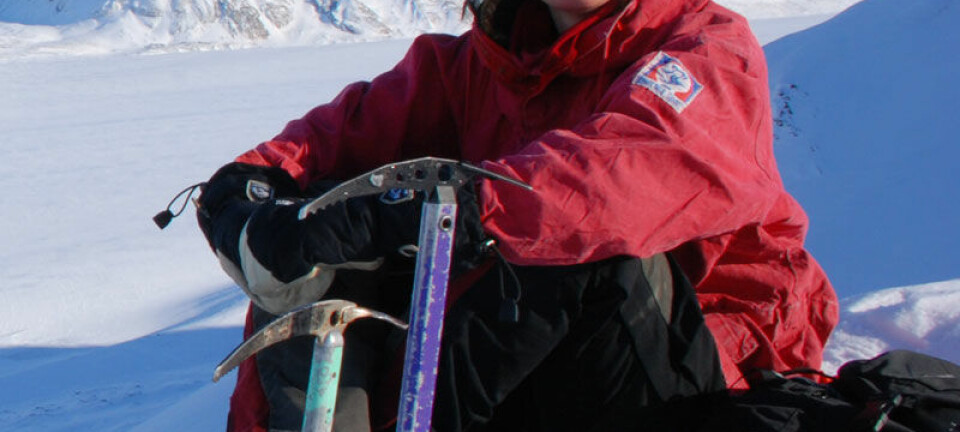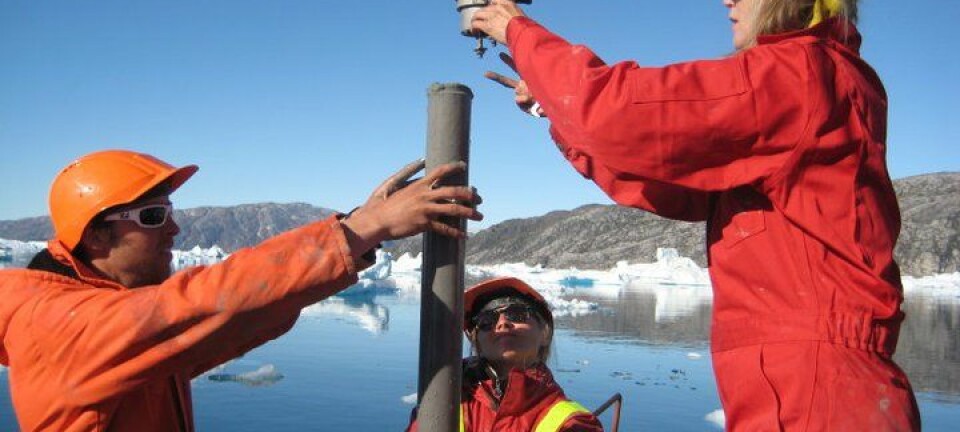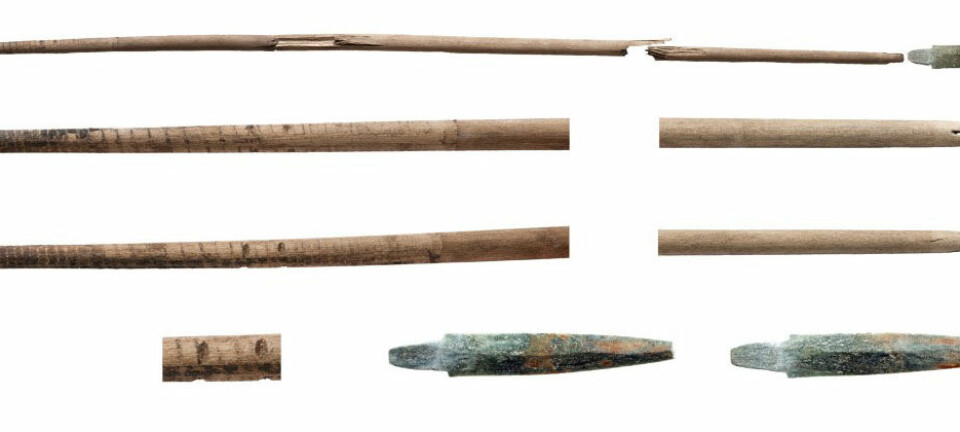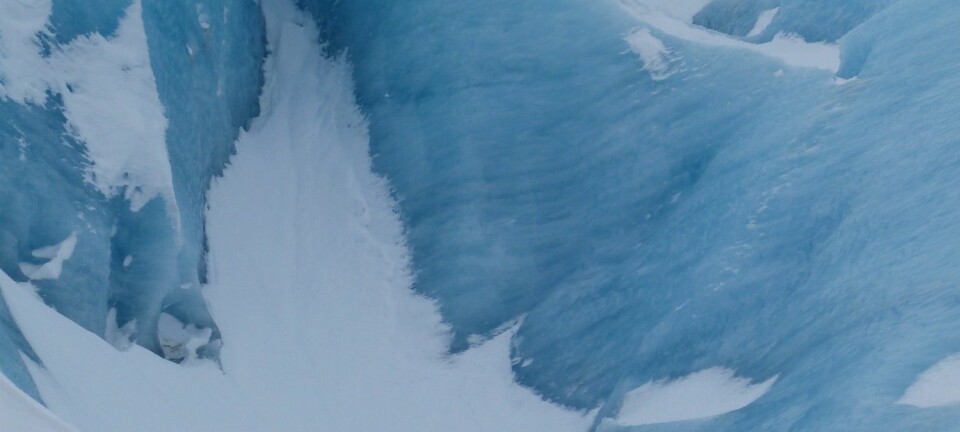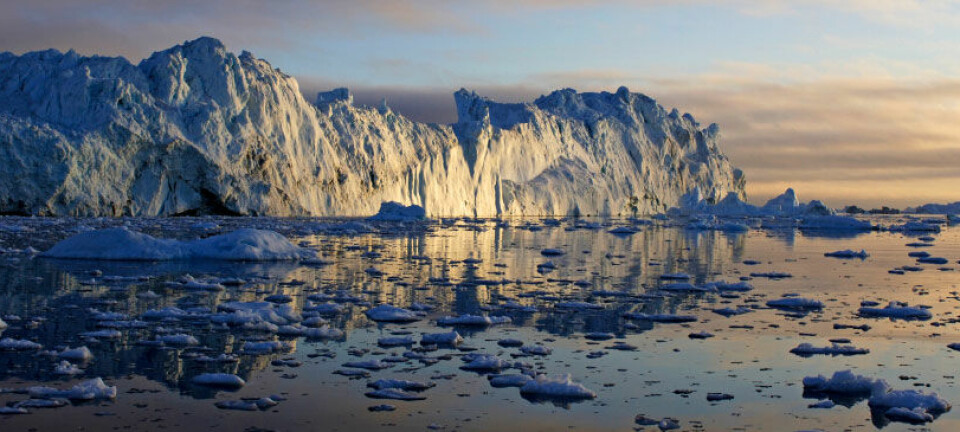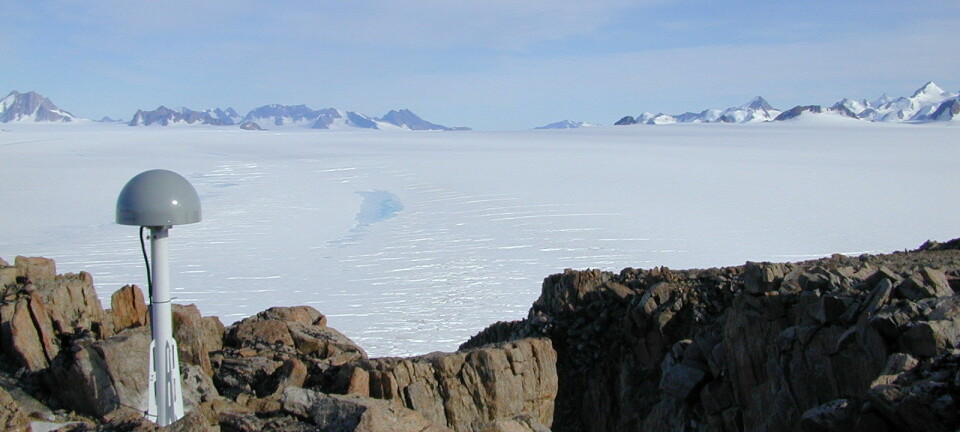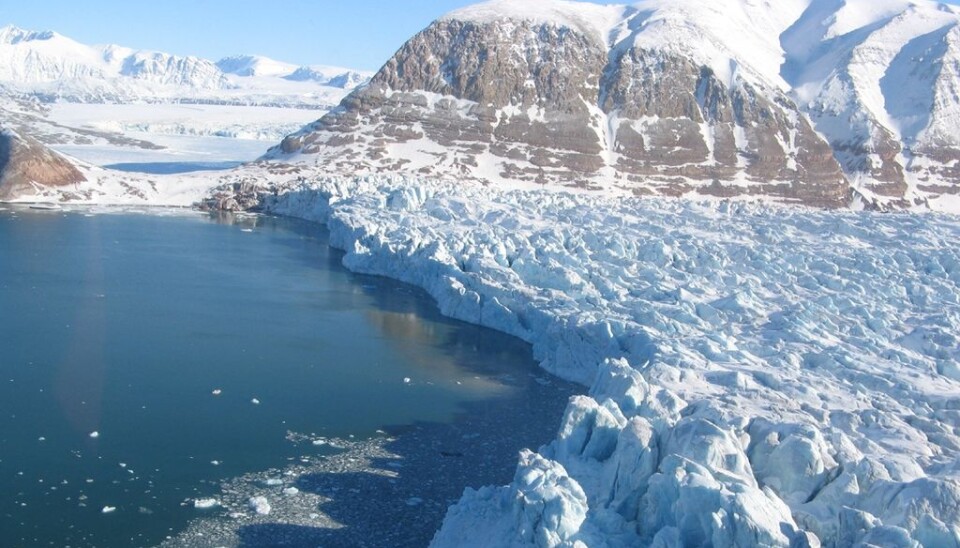
Glaciologists luck out with seismograph and video
VIDEO: Against all odds, while researchers helicoptered over Svalbard and filmed a calving glacier, a seismometer recorded the activity. The data they registered can help in detecting calving episodes and understanding the dynamics of glacial activity.
Denne artikkelen er over ti år gammel og kan inneholde utdatert informasjon.
“I only know of one other comparable recording, done in Alaska,” says Christopher Nuth of the University of Oslo’s Department of Geosciences.
He and his colleagues have studied a glacier Kronebreen, northwest of Longyearbyen in Norway’s Svalbard Islands for seven years now. Their goal is to see how the glacier reacts to climate changes.
Last chance
On 30 April, Nuth and his co-workers were flying in a helicopter over Kronebreen. They had a high-resolution video camera on board, sweeping across the face of the glacier along the sea.
Then it happened. A block of ice 40 metres high– like a 10-storey building – loosens and plunges into the sea in massive splash of snow and foam. The glacier had calved.
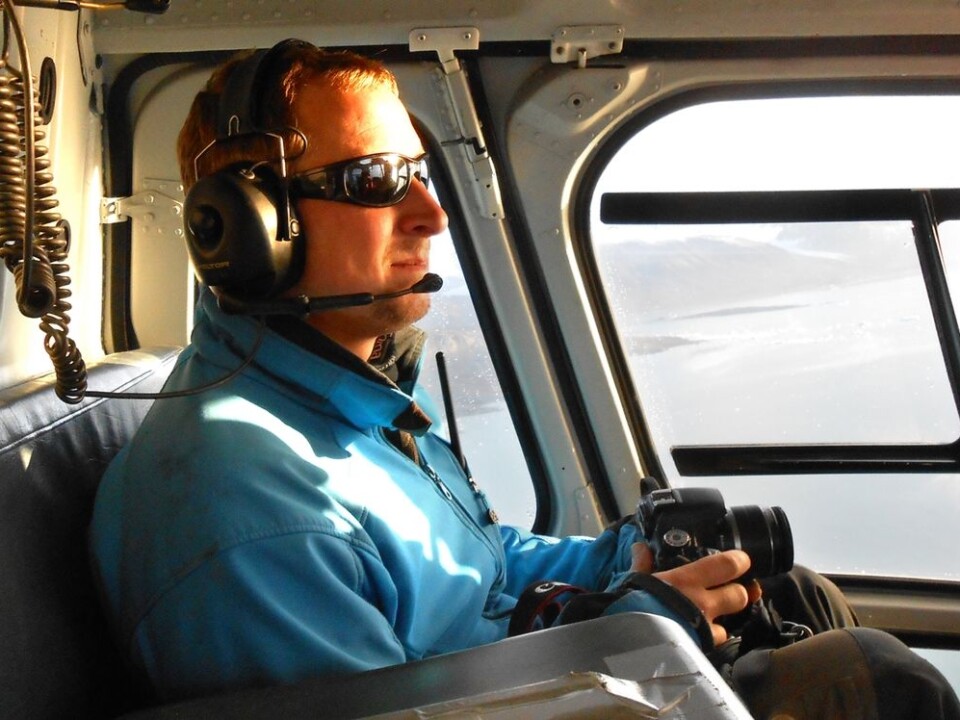
“The probability of getting such a recording on this day from the copter is about 1.7 percent,” says Nuth in en e-mail to ScienceNordic’s Norwegian affiliate, forskning.no.
At the same time, the needle of seismometer at Ny-Ålesund, 15 kilometres away, starts to jump.
This gave the scientists a rare opportunity to make valuable comparisons between the video of the calving and the tremors it made in the Earth’s crust.
Surprising answer
Glaciologists have only recently begun studying seismographs from stations that detect tremors and quakes. Calvings have been detectable on earthquake detecting machinery, but they were generally viewed as rather dull disturbances by seismologists.
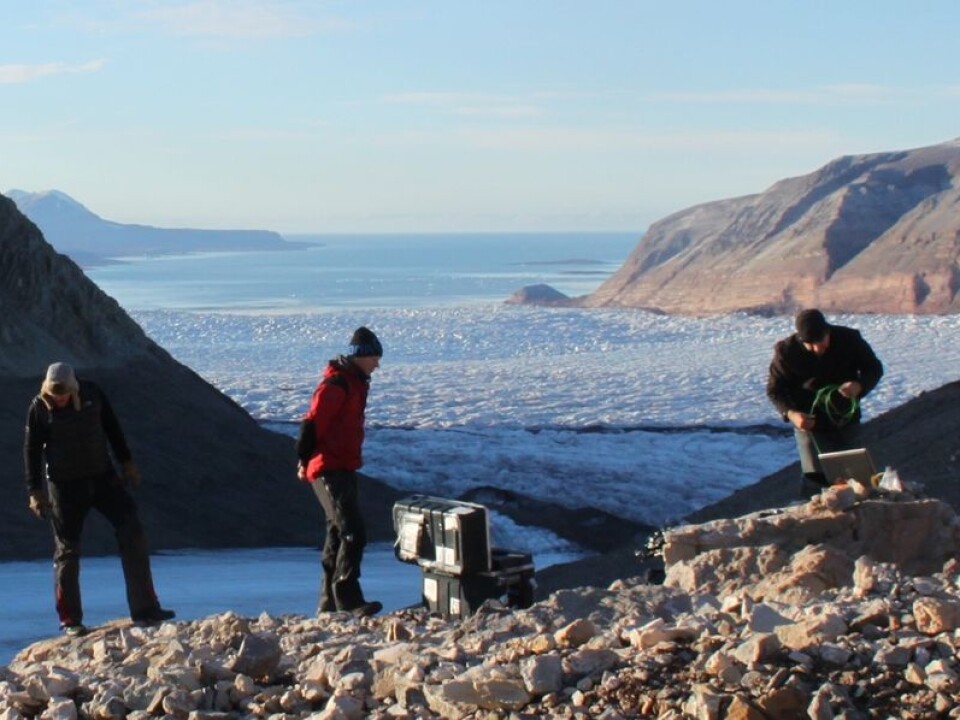
Then Nuth and his colleagues got an idea. Why not rig up seismometers on the glacier itself, Kronebreen? They could monitor all the lesser and larger movements in the ice.
They contacted some seismologists, who doubted that the glaciologists could register anything particularly interesting.
After a couple days of monitoring, Nuth sent the recordings to the seismologists and got a surprizing response: “I’ll be damned, Chris! There’s an earthquake in your glacier!”
Time and money saved
This was the start of the project Seismoglac, collaboration among the University of Oslo, the seismological research Norsar and the University of Kiel in Germany.
The goal was to use the permanent instruments in the settlements Ny-Ålesund and Longyearbyen to continuously monitor glaciers 24/7.
“The continual observation of calving glaciers with a video camera requires a huge effort in terms of time, resources and technology.”
“Also, it is hard to make videos during the dark winter half of the year at Svalbard,” writes Nuth.
If such direct observations could be replaced by seismological surveillance, scientists could discover many more calvings and other processes that occur short term.
Nuth says this would generate knowledge about the loss of ice in connection with calving and how the mass of the glacier changes and interacts with sea temperatures.
Preparing better models
But the researchers need to know how to interpret the seismic shakes and quakes on a glacier. This is where the rare video sequence comes in.
Such recordings and the simultaneous seismic measurements help to correlate the links between the seismic oscillations and movements of the ice.
Once the scientists find these connections gather lots of seismic data from glaciers they can create theoretical models regarding how the glaciers act.
“By calculating where the signals come from, we can get improve our knowledge of calving and other movements in or below the ice,” writes Nuth.
More accurate seal level prognoses
Climatologists are keen to learn as much as possible about glacial calving, as nearly half of the world’s glacier do calve into the ocean.
Nuth says that current theoretical models have not given sufficient attention to future changes in the volume and distribution of mass among glaciers.
“In order to predict how much and how the sea level will vary because of calving, we need to improve our understanding of calving to predict its impacts on sea levels and create realistic models,” he writes.
“One of the major limits to the IPCC’s current prognoses about glacial contributions to future ocean levels ties in with insufficient knowledge about how glacial calving will react to external factors such as the climate, meteorology and oceanography,” explains Nuth.
------------
Read the Norwegian version of this article at forskning.no
Translated by: Glenn Ostling







